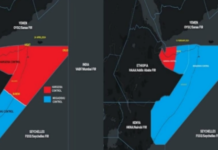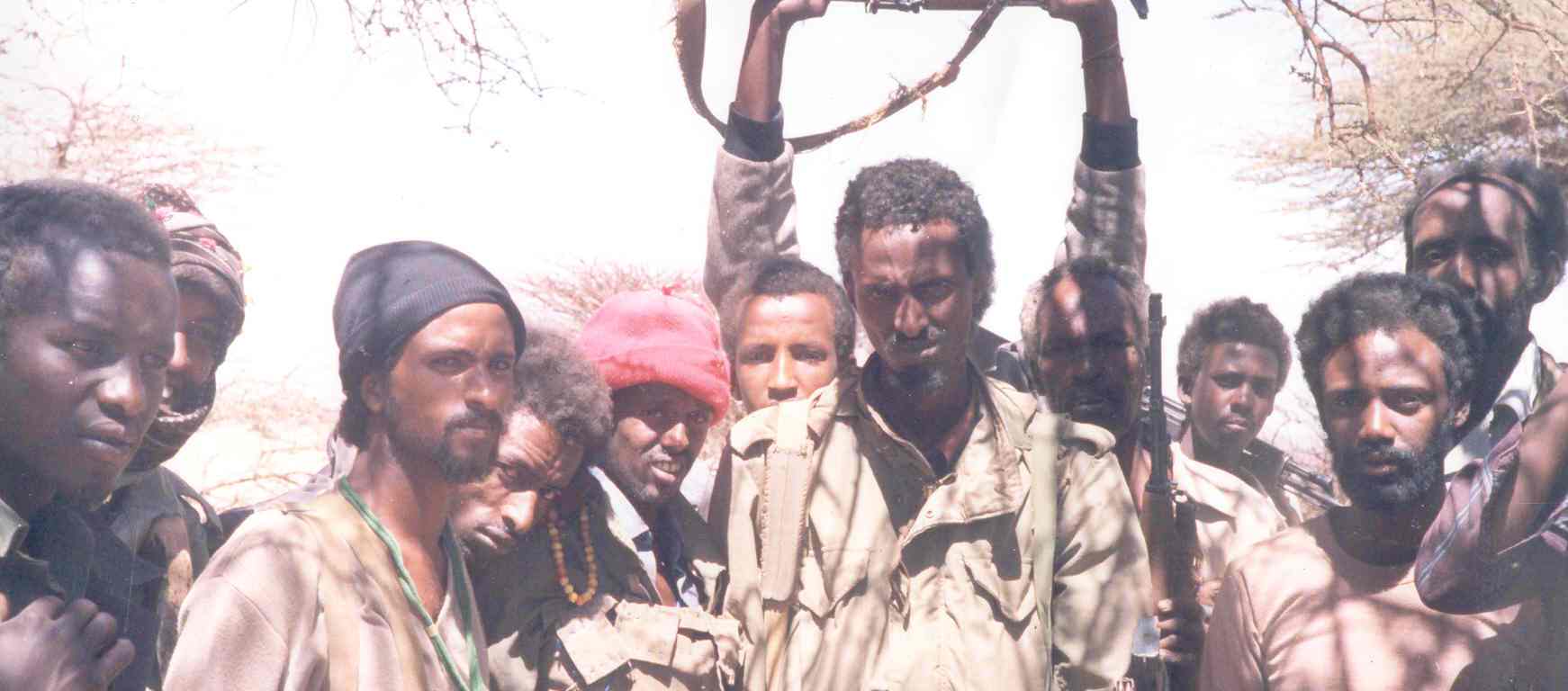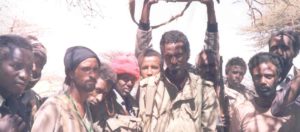By Dr. Hussein Mohamed Nur
It took almost a decade for the SNM to liberate Somaliland from Barre dictatorship. The SNM chairmanship changed four times during that period: Ahmed Mohamed Guleid (Jimale) (1981-1982); Sheikh Yusuf Sheikh Ali Sheikh Madar (1982-1983); Abdulkadir Kosar (1983-1984); Ahmed Mohamed Mohamoud (Sillanyo) (1984-1990) and Abdurahman Mohamed Ali (from 1990 until he became the first president of Somaliland in 1991).
SNM operations and tactics
 Since its establishment in 1981, the SNM went through different stages of growth and development. It started with an initial phase of build-up and organization both militarily and politically. In military terms, the first proper training school for the SNM fighters or liberators was established by Colonel Ahmed Mirre at Jina’asani (inside Ethiopia) though there were few other improper makeshift kinds of camps for recruitment and basic training before such as one at Aware. According to Colonel Mirre, the Jina’sani school started with 8 guns as weapons for the SNM in its entirety donated by Mohamed Ali’s guerrilla group (Afraad), the only SNM group that existed at the time. As soon as the Somali national army commanders heard about the news of the SNM armed forces inside Ethiopia, the Somali military armed militias traditionally in alliance and armed by the Somali government attacked the school with heavy weapons. Colonel Mirre retold how that attack turned into a blessing in disguise for them (the SNM). The SNM fighters acquired war booty after bravely defending themselves using only their skillful military tactics from their unfortified defense trenches. The attack was concluded in a defeat of the Somali government backed militias fleeing the area and leaving behind a huge amount of rounds of ammunition, guns, and weapons which the SNM unit badly needed. The booty for the SNM fighters tuned to be enormous (that exceeded more than 800 guns in the hands of the SNM fighters).
Since its establishment in 1981, the SNM went through different stages of growth and development. It started with an initial phase of build-up and organization both militarily and politically. In military terms, the first proper training school for the SNM fighters or liberators was established by Colonel Ahmed Mirre at Jina’asani (inside Ethiopia) though there were few other improper makeshift kinds of camps for recruitment and basic training before such as one at Aware. According to Colonel Mirre, the Jina’sani school started with 8 guns as weapons for the SNM in its entirety donated by Mohamed Ali’s guerrilla group (Afraad), the only SNM group that existed at the time. As soon as the Somali national army commanders heard about the news of the SNM armed forces inside Ethiopia, the Somali military armed militias traditionally in alliance and armed by the Somali government attacked the school with heavy weapons. Colonel Mirre retold how that attack turned into a blessing in disguise for them (the SNM). The SNM fighters acquired war booty after bravely defending themselves using only their skillful military tactics from their unfortified defense trenches. The attack was concluded in a defeat of the Somali government backed militias fleeing the area and leaving behind a huge amount of rounds of ammunition, guns, and weapons which the SNM unit badly needed. The booty for the SNM fighters tuned to be enormous (that exceeded more than 800 guns in the hands of the SNM fighters).
Later on SNM military bases or headquarters were established at Gashamo in the East which led by Colonel Mohamed Kahin Ahmed and Ali Hayan as his deputy; at Aware, the middle base was led by Shakib Suldan Abdulqadir; a central base commanded by Abdillahi Askar Barkhad and Dayib Gurey as his deputy; the West headquarter was based in Jigjiga and led by Mohamed Mirre Ahmed as the commander with Aden Suleiman as his deputy. Later on, for strategic purposes, two major military divisions were established to replace the different command bases: The Makka (eastern front division) which was commanded by Mohamed Mirre Ahmed and the Madina (the western front division) commanded by Ibrahim Hussein (Dhegaweyne) as the chief commander.
In its first years, the SNM started confining its operations in guerrilla warfare tactics. Hit and run and ambush operations were not uncommon damaging and keeping the Somali troops often in the panic, the principal objective.
 At the beginning, the operations were minor skirmishes with the Somali troops spread along the borders. Mohamed Ali and his colleague Mohamed Nur Ali of AFRAAD group were both highly skilled experts in guerrilla tactical operations. By the mid-1980s, the liberation struggle gathered momentum and the operations were successfully being conducted right inside the country.
At the beginning, the operations were minor skirmishes with the Somali troops spread along the borders. Mohamed Ali and his colleague Mohamed Nur Ali of AFRAAD group were both highly skilled experts in guerrilla tactical operations. By the mid-1980s, the liberation struggle gathered momentum and the operations were successfully being conducted right inside the country.
In October 1982 the SNM exerted excessive pressure on the Somali government. The SNM and the SSDF agreed to make a joint committee to coordinate activities. The two insurgent groups started broadcasting anti-government statements from Radio Kulmis (later it became known as Radio Halgan). But joint military operations were never organized and the joint SNM-SSDF committee languished idle.
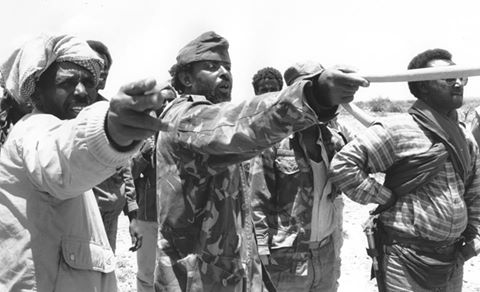 On 2 January 1983, the SNM took a full-scale operation well inside the country. An SNM commando unit attacked Mandera prison near Berbera and freed (some sources say about 700, others believe it was only a few dozens) political prisoners including elders and tribal chiefs. On another occasion, an SNM unit raided an armory and weapons deposit at Adadley (a town with a major military garrison and a jail) east of Hargeisa and escaped with a large number of arms and ammunition. That was one of the SNM strategies to obtain arms. Another way of getting arms was acquiring the arms brought by government forces defectors while in other times arms were bought from the government forces themselves through dealers with a connection to the regime.
On 2 January 1983, the SNM took a full-scale operation well inside the country. An SNM commando unit attacked Mandera prison near Berbera and freed (some sources say about 700, others believe it was only a few dozens) political prisoners including elders and tribal chiefs. On another occasion, an SNM unit raided an armory and weapons deposit at Adadley (a town with a major military garrison and a jail) east of Hargeisa and escaped with a large number of arms and ammunition. That was one of the SNM strategies to obtain arms. Another way of getting arms was acquiring the arms brought by government forces defectors while in other times arms were bought from the government forces themselves through dealers with a connection to the regime.
In response to that, the Somali government imposed dusk-to-dawn curfew throughout the north, state of emergency, closing of petrol or gas stations to the public, banning travel and transport in and out of the north, closing the borders especially with Djibouti to stop rebel units returning to their bases in Ethiopia. But nonetheless, the SNM operations convinced Mengistu Haile Mariam of Ethiopia that the SNM was a threat to the government of Siyad Barre and, therefore, provided more weapon and support.
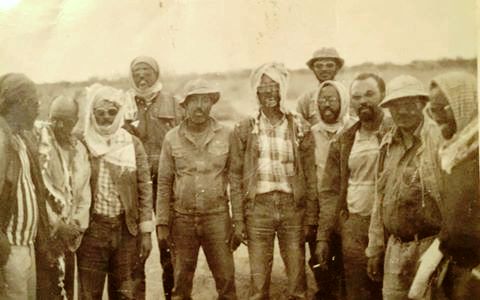 In 1983, the SNM made sporadic attacks on frontline government regiments. In June 1983 Baligubadle town on the border was targeted by the SNM attacking the Somali military forces. 17 October 1984 the SNM was engaged in a fierce battle with the Somali army at Buroa-Durey. The SNM casualty reached 25 that day including loss of its brave self-assured SNM officer, the commander, Colonel Mohamed Hashi ‘Lihle’. The day after there was a counter-attack by the enemy on the SNM front. The SNM casualty was 27 fighters dead.
In 1983, the SNM made sporadic attacks on frontline government regiments. In June 1983 Baligubadle town on the border was targeted by the SNM attacking the Somali military forces. 17 October 1984 the SNM was engaged in a fierce battle with the Somali army at Buroa-Durey. The SNM casualty reached 25 that day including loss of its brave self-assured SNM officer, the commander, Colonel Mohamed Hashi ‘Lihle’. The day after there was a counter-attack by the enemy on the SNM front. The SNM casualty was 27 fighters dead.
SNM units made infiltrations inside the country more specifically in the east (led by Mohamed Kahin and others), the west under Aden shine!) and well into highland mountains of the Gollis mountains range around Sheikh under Colonel Ibrahim Hussein ‘Dhegaweyne’ and into the east of the country (Somaliland) led by Mohamed Kahin. Those activities showed off the strength and power of the SNM which discredited by allegations and propaganda spread by the SSDF about the SNM. The SSDF had the intention to make a merger between the SNM and the SSDF.
In the mid-1980s the SNM stepped up its guerrilla attacks on government military posts in the north nearby Hargeisa, Burao and Berbera causing serious casualties. In desperate reaction to the attacks, government forces shot 300 civilians in different places and sentenced 7 youth to death after making demonstrations. A large number of SNM sympathizers were arrested in Burao alone. By the late 1980s large number of defections of soldiers and army commanders from the Somali government forces, civil servants and students joined the SNM forces. The SNM pressure was increasing ever since against the regime.
In 1984, the SNM plotted and took simultaneous attacks on government forces on three fronts. The SNM was always active employing guerrilla tactics. SNM units led by Colonel Ibrahim Abdillahi Hussein (Dhegaweyne) made operations in Sheikh town areas and the mountainous range in the North and returned back to bases.
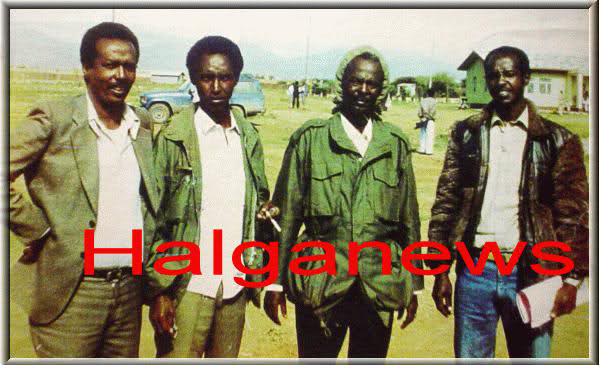 On 22 November 1984, in response to the SNM operation inside the country (Sheikh surrounding and mountainous highlands), the government took inhumane revenge by on civilians. The local community members were rounded up including women, children, religious leaders etc.. Sheikh Abdirahman Mohamed Ali and 11 other civilians captured from the rural areas surrounding Sheikh town were caught being accused of supporting the SNM and executed them while people were not allowed to bury the dead corpses which were left for the vultures and wild beasts to prey on for days.
On 22 November 1984, in response to the SNM operation inside the country (Sheikh surrounding and mountainous highlands), the government took inhumane revenge by on civilians. The local community members were rounded up including women, children, religious leaders etc.. Sheikh Abdirahman Mohamed Ali and 11 other civilians captured from the rural areas surrounding Sheikh town were caught being accused of supporting the SNM and executed them while people were not allowed to bury the dead corpses which were left for the vultures and wild beasts to prey on for days.
Between June 1985 and February 1986, The SNM carried up to 30 operations against Barre’s armed forces in the north. The SNM killed 476 soldiers, captured 11 vehicles and destroyed 26 others.
A mass persecution at Burao
In 1984, 43 civilians, including businessmen, civil servants, a Police officer (Colonel Mohamed Ali Mire – Qorane) and others who were caught from rural settlements, villages and Burao suburban areas were herded together alleged to have supported the SNM and its activities. They were accused of providing facilitation for an SNM inside the cell as well as being members. On 20 December 1984, they were all brought to court in Burao and were all executed, except two absentees, by a firing squad from armed forces [(a special unit with members from the army, the police and the Dervishes unit (Darawish)] at the Badhka/Barta, a famous execution spot in Burao. The execution took place shortly after a brief mock show or trial at a military tribunal court. The long list of the prisoners is as shown below.
The order and instructions were from Mogadishu and the hearing was briefly held at a military court in Burao by the Deputy Prosecutor of the military court of the national army, Colonel Yusuf Mohamed Farah. The secretary of the Burao municipality was ordered in advance to prepare and provide the necessary logistics such as tractors and diggers for excavation of the burial sites and mass graves for the bodies. The list of the victims (most of them assigned as ‘Dilsuge’ – waiting for execution (in red pen).
After a few minutes of a mock trial and performing of non-legalistic rituals orchestrated dominantly by the courts of the government. The notorious law No. 54 was used in support for the justification of innocents. It was cited at the court and applied for the murder of those individuals. The allegations and accusations that they were supporters and showed sympathies for the SNM. No evidence was brought forth. The names of the 43 victims were: 1.Qasim Qodah Jama (businessman); 2. Abdirahman Haji Mohamed Sirad (Oday) (teacher); 3. Essa Essa Ibrahim Ismail; 4.Essa Ibrahim Ismail; 5. Adan Nur Ismail (Qoorcase); 6. Yassin Ahmed Warsame (Sonani); 7. Abdi Mohamed Alin (Dhegjar); 8.Ahmed Abdi Hassan; 9. Ahmed Yusuf Mire; 10. Abdi Jama Hassan Sanweyne; 11. Mohamed Yusuf Ismail (coomas); 12. Ahmed Hassan Ismail (Yunbur); 13. Deria Osman Yussuf (Laba Lugood); 14. Colonel Mohamed Ali Mire (Qorane)(; 15. Shukri Mohamed; 16. Ismail Salah Wiriye; 17. Mohamed Samatar Ahmed; 18. Saleban Hirad Adan; 19. Ali Abdi Hassan; 20. Adan Jama Warsame; 21. Mohamed Mohamoud Abdi; 22. Ahmed Ismail Mohamed; 23.Ali Omer Deria; 24. Musse Hassan; 25. Ali Shire Ghalib; 26. Abdullahi Mohamed Farah; 27. Adan Ali Ibrahim; 28. Abdi Mohamed Yusuf; 29. Abdi Hassan Jama; 30. Abdillahi Hassan Nur; 31. Ali (unreadable)??; 32. Gaashaanle??? (Unreadable); 33 (unreadable); 34. Gaashaanle Farah?; 35. Jama Abdillahi Said; 36. Laila Mohamed Egeh; 37. Abdi Ali Ahmed; 38. Said Osman Geelle; 39. Abubakar Abdillahi Roble; 40. Abdillahi Salah Gir; 41. Awil Salah Gire; 42. Ibrahim Mohamed Handulle (ina Aar); 43. Abdi Hussein Dheere. The last two were not presented but were tried in absentia.
 The mock trial court proceedings were witnessed by Abdillahi Jama Yusuf who was allowed to enter the court. A prejudgment was made beforehand and even before the kangaroo court. It was already decided and rehearsed by a higher authority in Mogadishu which was usually the president. Colonel Mohamed Said Morgan was present and overseer to ensure the process is done. After the firing squad finished the massacre business, the corpses were hastily buried using bulldozers in makeshift mass graves in groups of ten.
The mock trial court proceedings were witnessed by Abdillahi Jama Yusuf who was allowed to enter the court. A prejudgment was made beforehand and even before the kangaroo court. It was already decided and rehearsed by a higher authority in Mogadishu which was usually the president. Colonel Mohamed Said Morgan was present and overseer to ensure the process is done. After the firing squad finished the massacre business, the corpses were hastily buried using bulldozers in makeshift mass graves in groups of ten.
In overall, the operations at times cost dearly for the SNM. The SNM lost some of its finest commanders (high ranking ex-Somali military). Colonels Mohamed Hashi ‘Lixle’, Adan Suleiman, Mohamed Ali, Ahmed Gaab among others who were killed in combat services at different times. Meanwhile, others such as Colonel Adan Mohamed Sheikh Abdi ‘Shine’ and Abdulqadir Kosar were killed under dubious circumstances. Colonel Ibrahim Yussuf Mohamed ‘Kodbur’. Colonel Mahdi Ali Farah and others died of natural causes.
To be continued










